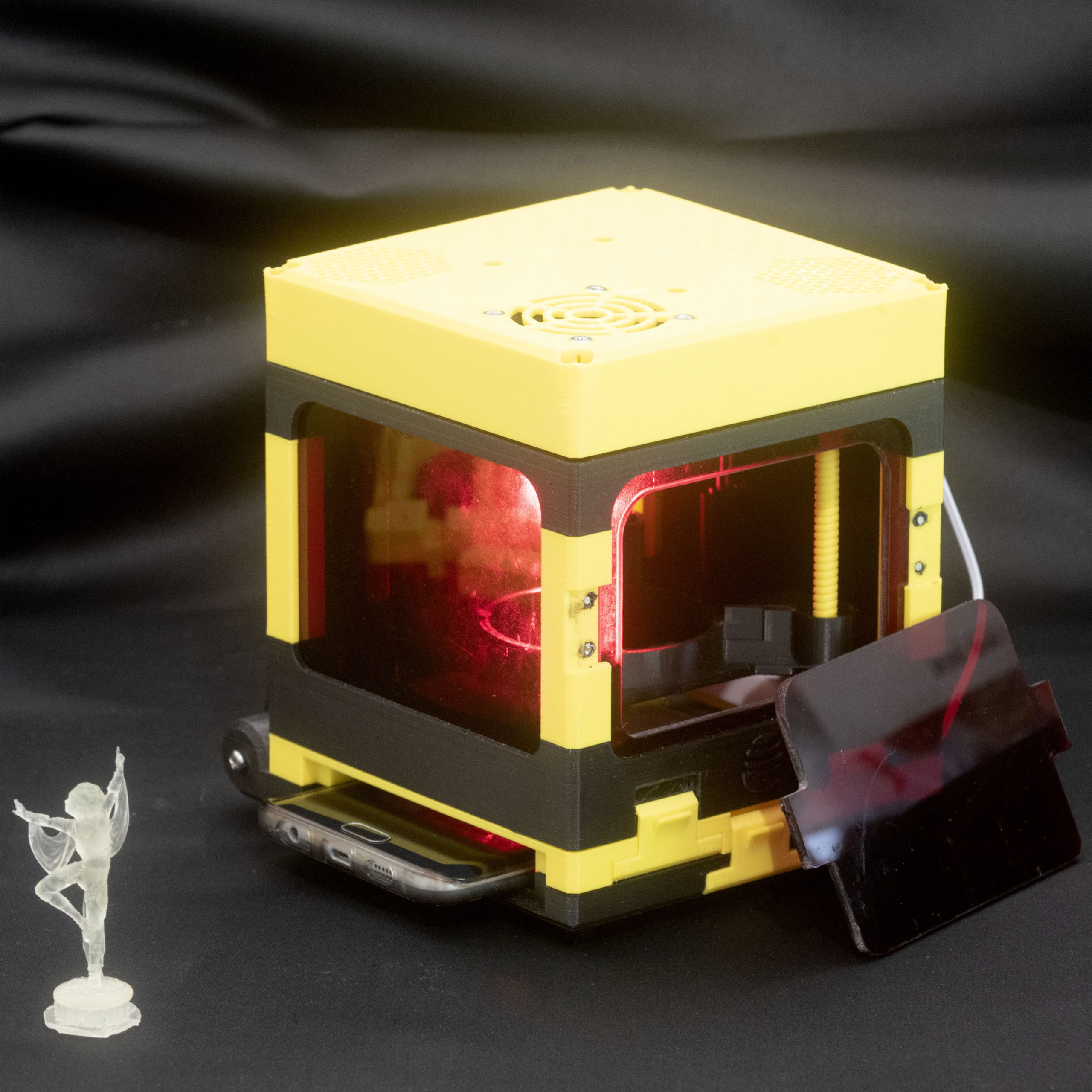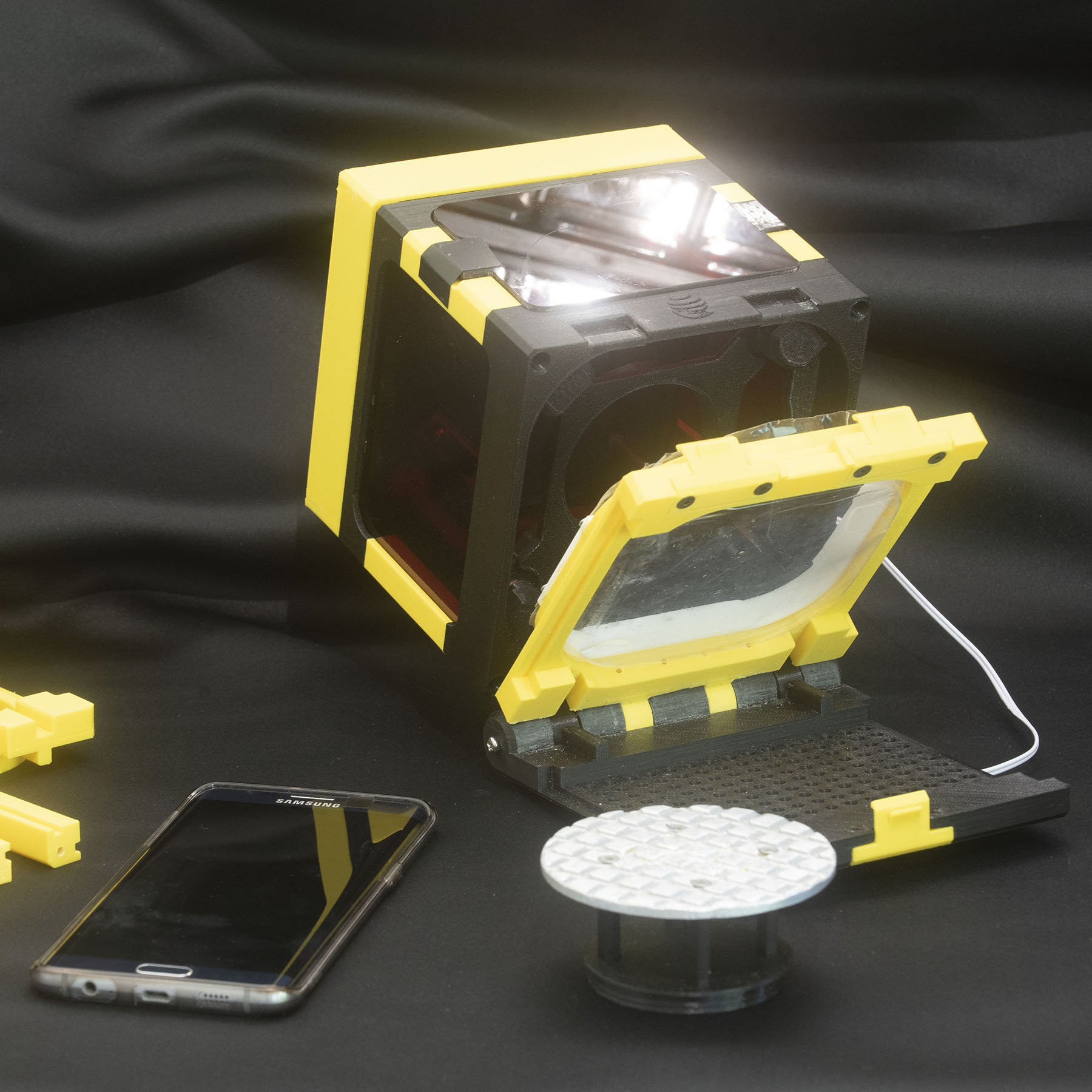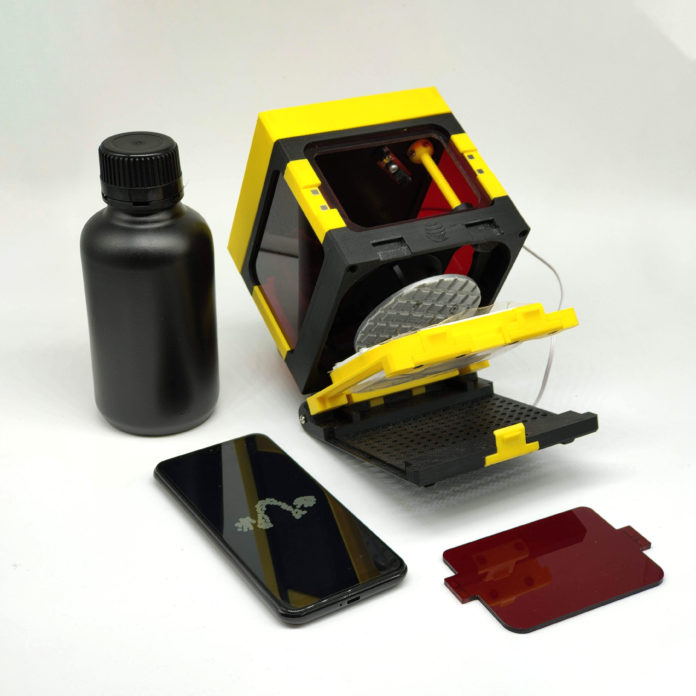LumiBee is a unique mini 3D resin printer that uses smartphone as a light source to polymerize the resin. The project is free for everyone who wants to create their own device at home. To create it, all you need is a LPD printer. The LumiBee prototype was created on the Zortrax M200 3D printer.
The LumiBee is a unique compact 3D printer that uses photosensitive liquid resin. It has been designed
so that 95% of its parts can be printed with a desktop LPD 3D printer. The LumiBee also stands
out because it uses the screen of a mobile phone, inserted inside, to transform daylight liquid resin into a three-dimensional object. Daylight resin for 3D printing allows most smartphones to be used as a light source to solidify the resin. This allows us to give a second life to slightly outdated cell phones.
“I made LumiBee as a personal project. I developed mechanical design, PCB design, prototyping, firmware and App. I made first prototypes for the chassis using the FFF 3D printer we have in house, a Zortrax M200 and Z-ULTRAT filament. M200 provided us with everything we needed. The quality was good enough even to print threaded bars and nuts for LumiBee Z-axis. An idea popped into my mind: LumiBee parts should be designed in a way that any user can 3D print them at home with a domestic FFF printer at a very low cost. I decided with my team to release LumiBee as free Open Source project by Lumi Industries, perfectly matching our mission to make 3D printing benefits available to a larger public”, said Davide Marin, Lumi Industries CEO explains.


The LumiBee chassis design was split into “segments” with specific functions: holding the phone, housing the PCB board, etc., and they can be customized or replaced easily.
In the prototyping process, each segment was printed in a different color to highlight this feature. The name LumiBee is not an accident. At the prototyping stage, the studio had two filament colors available: black and yellow. The finished device resembled a bee, and this resemblance went way beyond appearance.
“In nature, this tiny animal has such an important role in our lives. It contributes
to complex,interconnected ecosystems and we felt this reflected also the idea of the project itself involving different players like makers, 3D printing lovers and fans, as well as different companies to cooperate for the good and, if possible even improved, outcome of the project”, adds Marin.
Partners of the project are Photocentric providing suitable daylight resins, Zortrax – creator of the printer on which LumiBee was printed and 3D Filium, suggesting particular filaments, like their new coming non-flammable PlaQ FRVO, perfect for extra safety when embedding electronic components.
“We are glad that users of Zortrax printers use our equipment for creative projects and share their solutions with the tech enthusiasts community. The ability to create your own devices, modify and improve them is one of the most important things 3D printing brings to the table. We are excited to see how people will transform and modify LumiBee in the future”, said Rafał Tomasiak, CEO of Zortrax.
LumiBee open source project looks simple, but hides some smart solutions. For example, LumiBee communicates easily with any smartphone in the market. Every smartphone has a built-in flash for the rear camera, and accessing it is easy in Android studio. Communication protocol was reduced to the bare minimum, using a quick blink of the smartphone flash to say “go up 1 layer in the Z-axis” to LumiBee and 2 quick blinks to communicate “print is finished, put the tray completely out of the resin”.
Feel free to download the files from the site: www.lumindustries.com/lumibee
and start creating your own machine.
You can now post free of charge job opportunities in the AM Industry on 3D ADEPT Media.
For further information about 3D Printing, follow us on our social networks and subscribe to our newsletter : Facebook, Twitter, LinkedIn & Instagram !
Would you like to be featured in the next issue of our digital magazine? Send us an email at contact@3dadept.com






